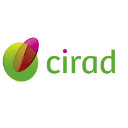Three Infectious Viral Species Lying in Wait in the Banana Genome.
| Title | Three Infectious Viral Species Lying in Wait in the Banana Genome. |
| Publication Type | Journal Article |
| Year of Publication | 2013 |
| Authors | Chabannes, Matthieu, Baurens Franc-Christophe, Duroy Pierre-Olivier, Bocs Stéphanie, Vernerey Marie-Stéphanie, Rodier-Goud Marguerite, Barbe Valérie, Gayral Philippe, and Iskra-Caruana Marie-Line |
| Journal | Journal of virology |
| Date Published | 2013 May 29 |
| ISSN | 1098-5514 |
| Abstract | Plant pararetroviruses integrate serendipitously into their host genome. The banana genome harbors integrated copies of Banana streak virus (BSV) named endogenous BSV (eBSV) that are able to release infectious pararetrovirus. Here we characterize integrants of three BSV species-Goldfinger (eBSGFV), Imové (eBSImV) and Obino l'Ewai (eBSOLV)-in the seedy Musa balbisiana Pisang klutuk wulung (PKW) by studying their molecular structure, genomic organization, genomic landscape and infectious capacity. All eBSV exhibit extensive viral genome duplications and rearrangements. eBSV segregation analysis on an F1 population of PKW combined with fluorescent in situ hybridization analysis showed that eBSImV, eBSOLV and eBSGFV are each present at a single locus. eBSOLV and eBSGFV contain two distinct alleles, whereas eBSImV has two structurally identical alleles. Genotyping of both eBSV and viral particles expressed in the progeny demonstrated that only one allele for each species is infectious. The infectious allele of eBSImV could not be identified since both alleles are identical. Finally, we demonstrate that eBSGFV and eBSOLV are located on chromosome 1 and eBSImV on chromosome 2 of the reference Musa genome published recently. The structure and evolution of eBSVs suggest sequential integration into the plant genome, and haplotype divergence analysis confirms that the three loci display differential evolution. Based on our data, we propose a model for BSV integration and eBSV evolution in the Musa balbisiana genome. The mutual benefits of this unique host-pathogen association are also discussed. |
| DOI | 10.1128/JVI.00899-13 |
| Alternate Journal | J. Virol. |



